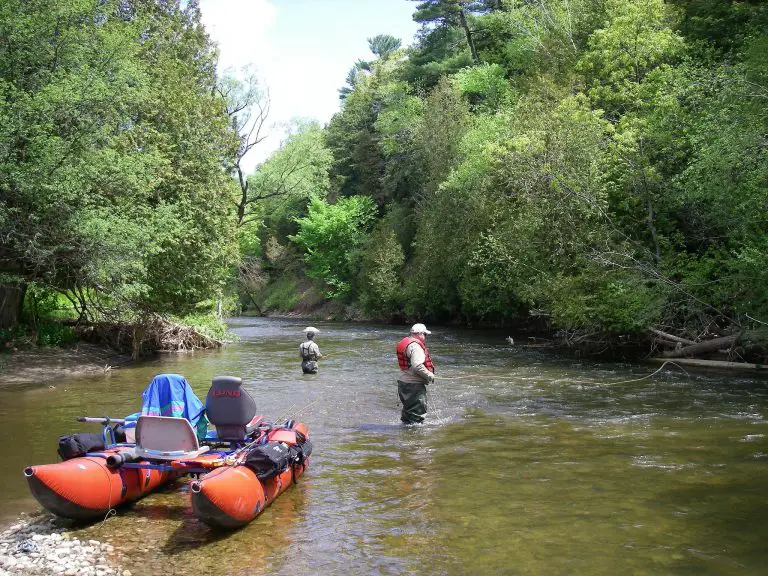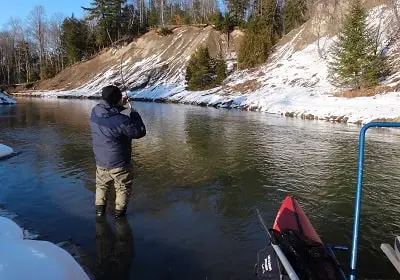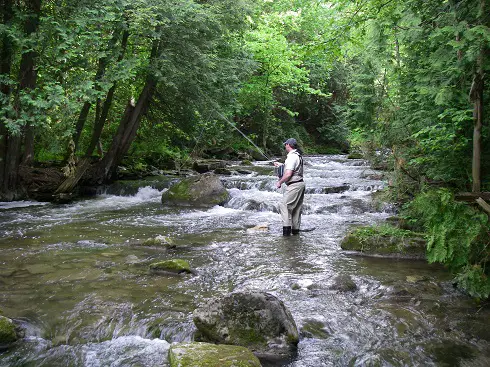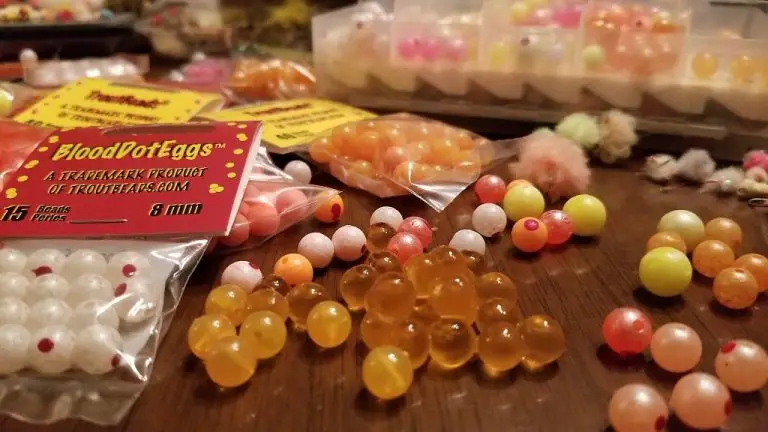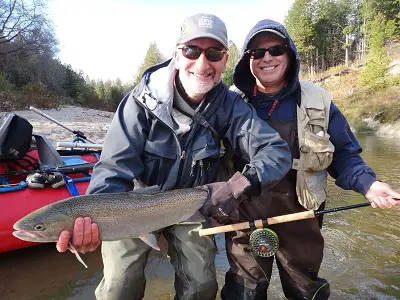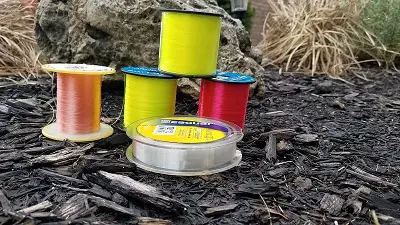Flies For Ontario Steelhead
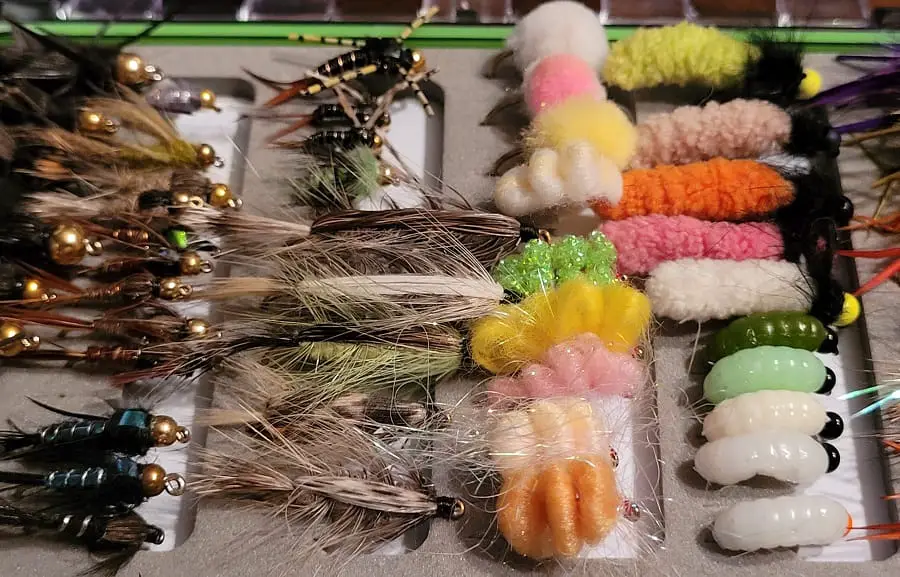
I will let you in on a little secret: Most guides use the same three or four fly patterns 90% of the time, which means 90% of the fish they catch are all on these proven steelhead fly patterns.
I will also tell you my most effective flies, which help my clients catch many steelhead while on guide trips with me.
I would guess 75% of steelhead are caught on Egg patterns, nymphs, or streamers such as Woolly Buggers or Egg Sucking Leeches that are used as nymphs. The other 25% are caught on Spey flies, streamers, and maybe dry flies.
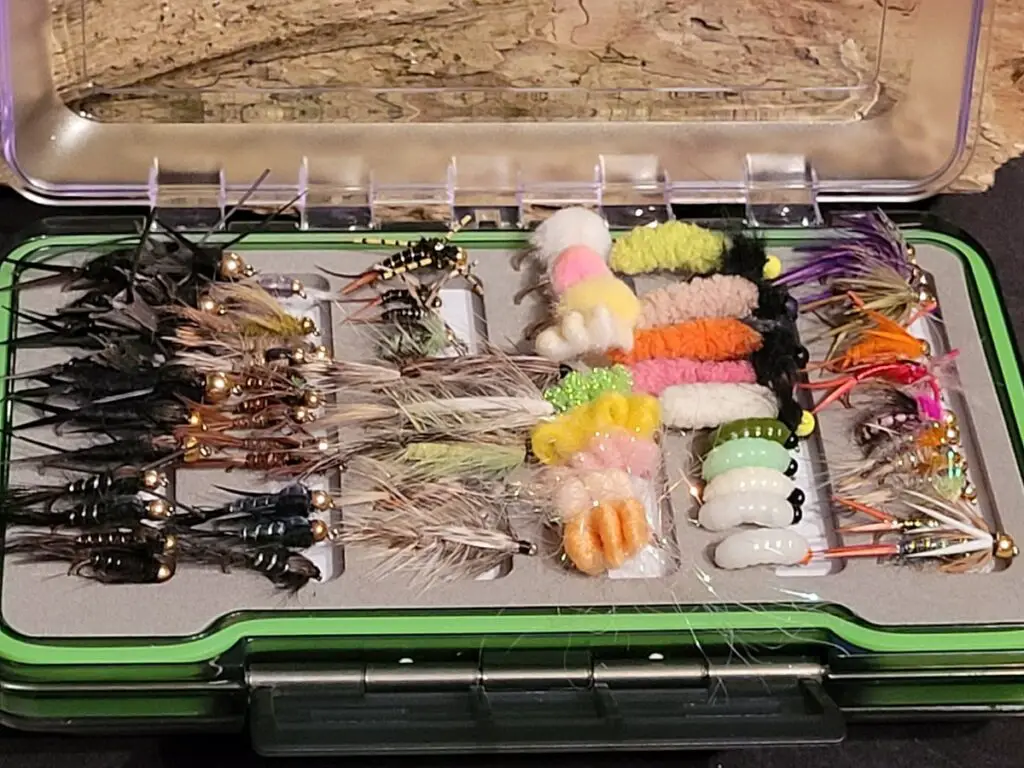
I think that most anglers are looking for that one magic fly that will catch them all the fish but they never find it, which is why their boxes are full of fly patterns. Let me tell you from experience that there is no magic fly!
There will be days when one fly will work very well, but other days when that same fly won’t work at all.
The river conditions, which include the speed, depth, and water clarity, affect the types of flies that will trigger a strike response in the steelhead.
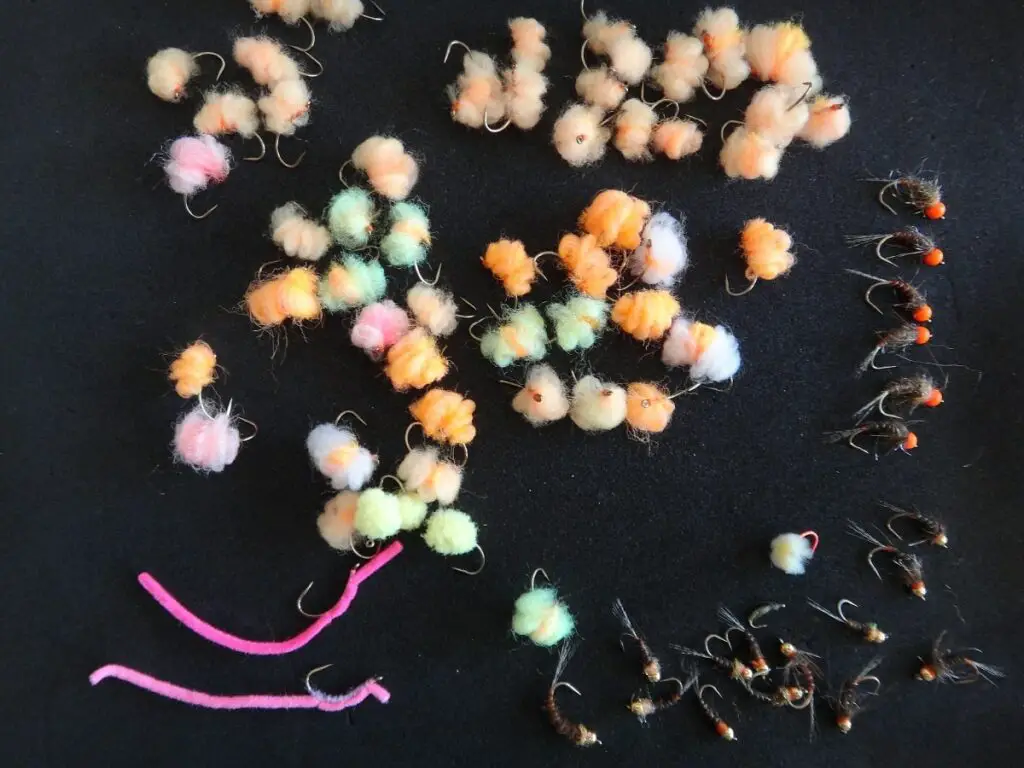
Even the activity level of the steelhead makes a difference.
All of these factors change daily, so smart anglers will have an assortment of flies, but not too many.
If you think about how fish feed naturally, all you need is 4 or 5 different fly patterns to be successful on the rivers.
There are hundreds of flies out there. I have many steelhead books that all have the so-called best steelhead flies, but I have tried 95% of these flies, and to be honest, most of these flies are mediocre at best. Few would make my list of consistently effective flies, and only a half dozen have proven to be really good flies.
These are the flies I will show you.
1. Egg Patterns Are The Number 1 Use Fly
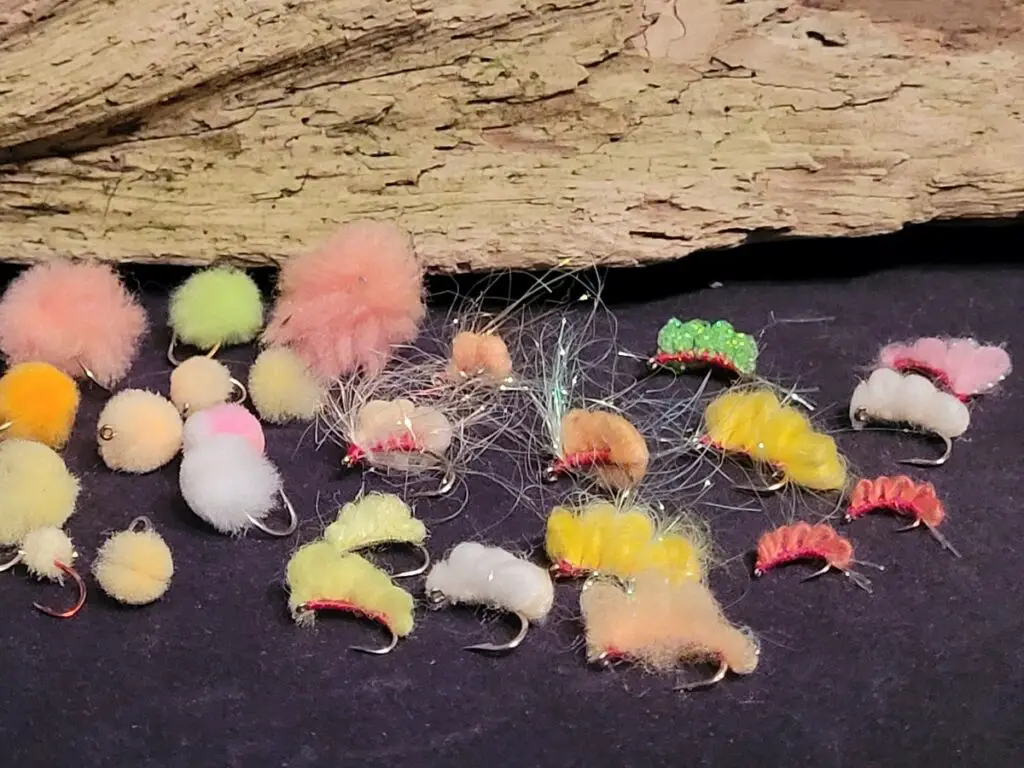
Let’s start with egg patterns. I would bet that the majority of steelhead caught fly fishing are caught on egg patters.
There are dozens of variations of egg flies, but when presented well, a simple pattern known as the Glo Bug Egg or Yarn egg will catch the most fish.
Yes, flashy patterns such as the Crystal Meth, Estaz Egg, and Nuke Eggs are flashy attractor patterns that might be more effective in faster, deeper, or dirtier water, or when the steelhead are really agressive. But, these can also be too flashy and turn the fish off if used in the wrong conditions.
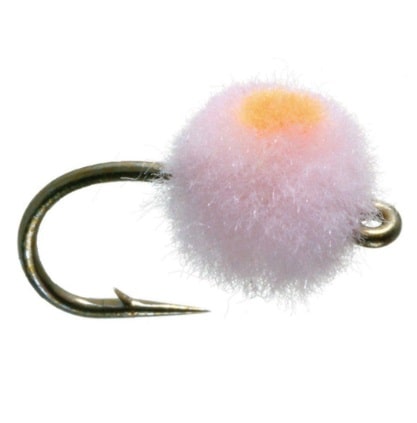
I would bet, of all the egg patterns I and other guides use, 90% of the steelhead we catch are on the simple Yarn Egg. It looks like a natural egg, which the steelhead recognizes as food.
Just make sure you have them in two or three sizes: 6mm, 8mm, and 12mm. Also, have them in a variety of colors so you can adapt to the conditions.
| Bait Color | Water Condition | Hook Size |
|---|---|---|
| Peach | Clear water | 8 to 10 |
| Salmon | Clear water | 8 to 10 |
| White | Clear water, Winter | 8 to 10 |
| Light Pink | Clear water | 8 to 10 |
| Chartreuse | Dirty water | 4 to 6 |
| Hot Pink | Off-colored water | 4 to 10 |
| Orange | All water conditions | 8 to 10 |
| Yellow/Cheese | All water conditions | 4 to 10 |
2. Steelhead Worm Is One Of The Best Flies For Ontario Steelhead
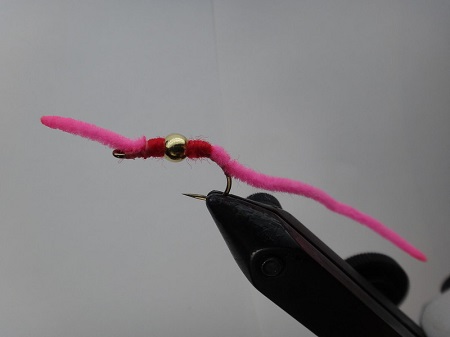
Of all the flies I use, the steelhead worm in pink, red, or brown is often the first fly I try. When fishing multiple flies on the line at the same time, it is rare that I do not have a worm pattern on.
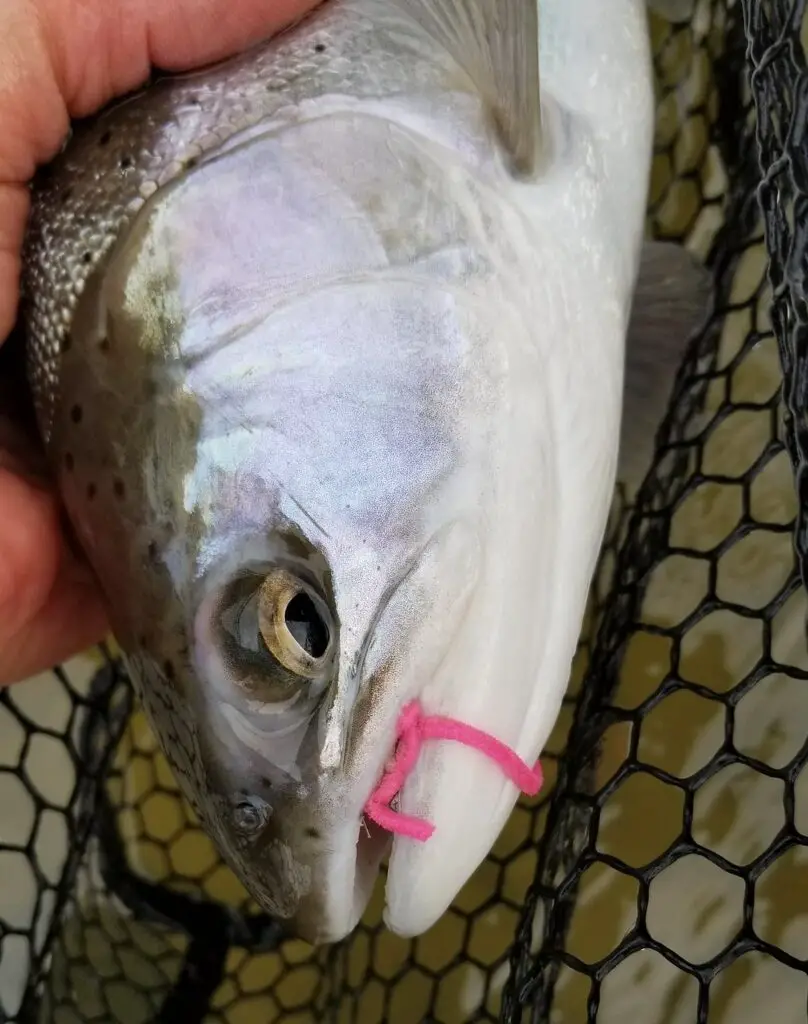
This is a large fly that gets their attention. In the last five years, I would bet that the worm fly has accounted for more steelhead in my net than any other fly, and probably even all other flies combined.
I’d guess 75% of the steelhead I now catch comes due to the worm pattern.
3. Stonefly
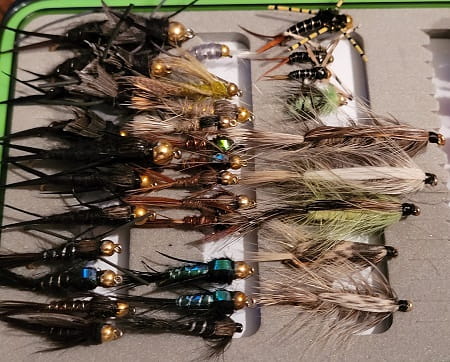
A black or brown stonefly is a must-have fly for Ontario steelhead since most or all Ontario steelhead rivers have Stoneflies in them.
Even a simple Pheasant Tail Nymph in black or brown can imitate stone flies. In Ontario, I have determined that sizes 8, 10, and 12 work best unless there is a hatch of what is known as the Tiny Winter Black, in which case a size 14 is suitable.
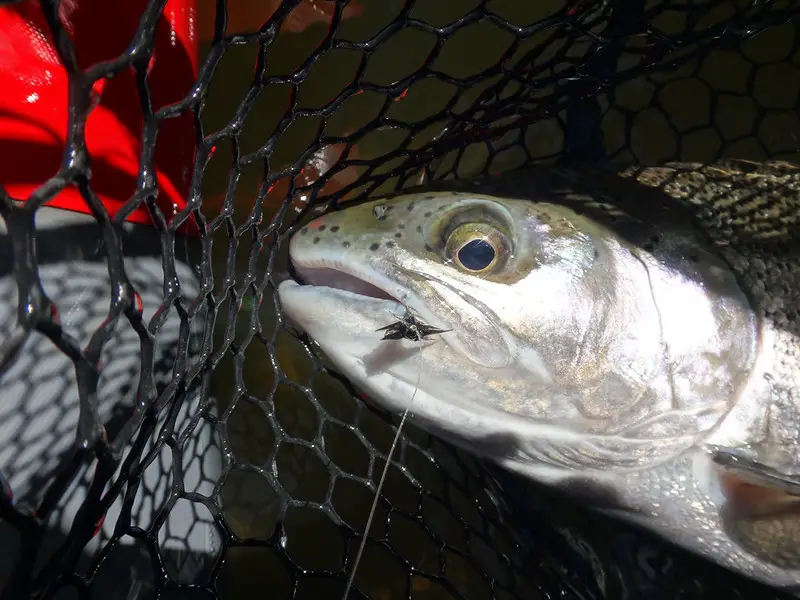
Pro Tip: 75% of my nymphs have a silver, gold, or copper bead. The bead acts as an attractor, and I have found that I catch 80% more steelhead on flies with beads.
There are times when a more subtle fly without a bead will work better, so it is wise to have both.
4. MayFlies and Caddis
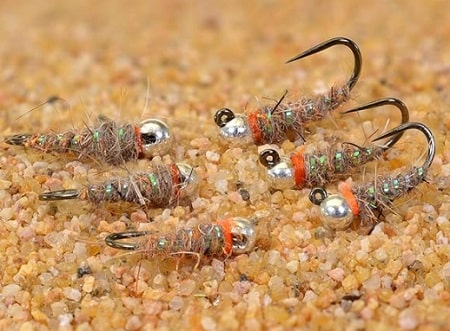
- Walts Worm and Sexy Walts Worm – I have never done very well with caddis patterns, with the exception the Walts Worm which could resemble a cased caddis. Whatever it resembles, at times, this is my hottest nymph pattern.
- Polish Pheasant Tail Nymph – This started out as a great trout pattern, but it quickly becuase my go-to nymph pattern to imitate both mayflies and stoneflies.
- Prince Nymph – This is a good attractor pattern that has worked very well for me in the spring, especially for drop-back steelhead.
5. Woolly Bugger and Micro Bugger
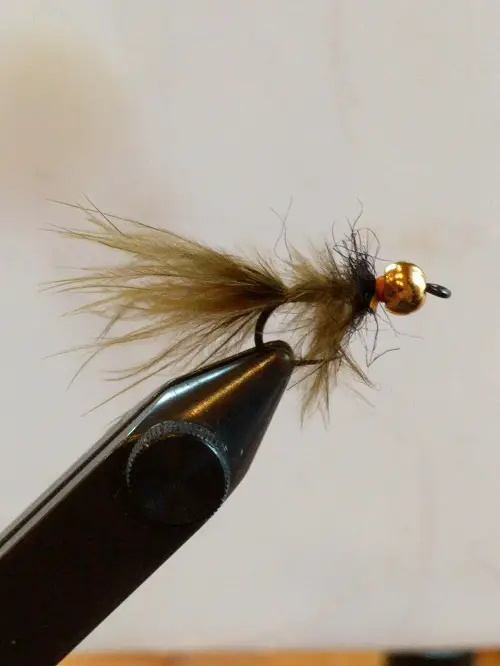
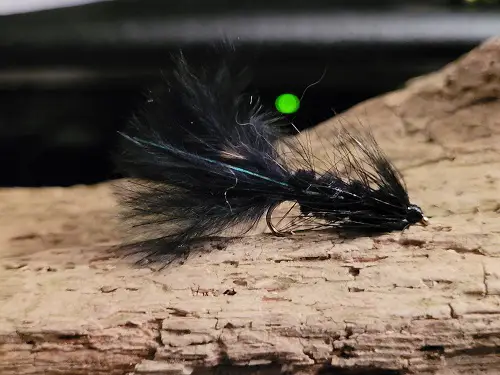
The Woolly Bugger is a very effective steelhead fly pattern that can be fished as a nymph, or as a streamer. It is a must-have fly pattern, and I always have these in Black, White, and Olive. I add some tinsel or flash to make it even more effective. I use these in size 2 to 3 inches.
Micro Buggers are basically mini- Woolly Buggers. I tied them so they are half an inch to 1.5 inches long. They can be deadly in clear water.
6. Egg Sucking Leech
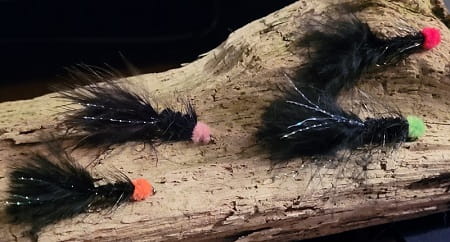
This is a favorite of many steelhead anglers and a fly I use in off-colored water.
The body color I do the best with is black or olive, with red, pink, orange, or chartreuse egghead. I will change colors based on the conditions.
Streamer Flies
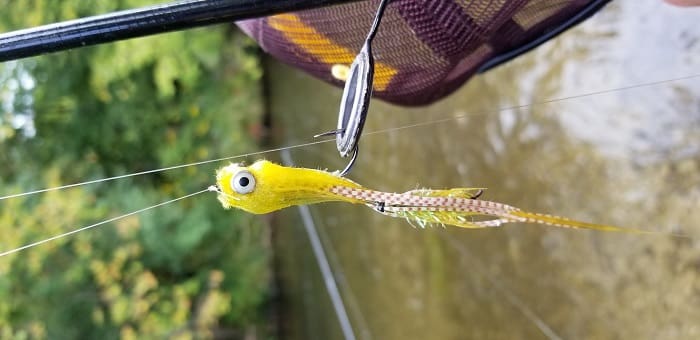
If and when I streamer fish for steelhead, I will often use the same large streamer flies that I use for brown trout.
These flies include:
- Circus Peanut
- Zoo Cougar
- Sculpzilla
- Woolly Bugger
Spey Flies
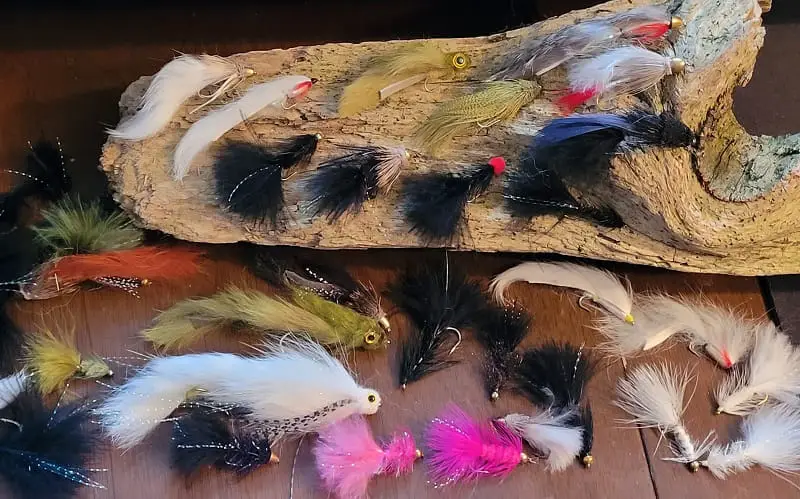
I’ve fished with hard-core steelhead Spey anglers that have dozens of fly patterns in their boxes.
I will be honest with you: 2 or 3 Spey files are all you need to catch steelhead almost anywhere. You just need them in a few sizes and multiple colors to suit all conditions.
#1. Hoh Bo Spey
The Hoh Bo Spey fly was recommended by a local guide. It is one of the easier spey flies to tie. It can be tied sparse or full.
Either way, the marabou feathers and shape of this fly give it lifelike movement in the water, which the steelhead likes.
If I had to choose only one spey fly this would be it.
I do very well when tied in white, black, or olive and two to four inches long. I will also use it in chartreuse, pink, or orange at times if the conditions call for brighter colors.
#2 Intruder Fly
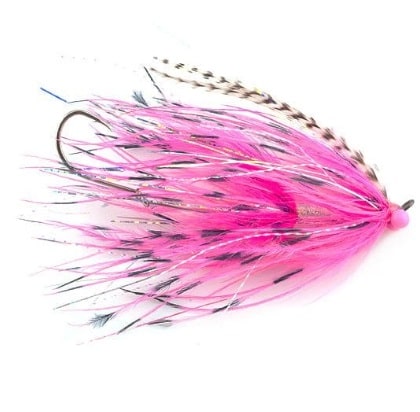
The is a very popular West Coast steelhead fly but it is also loved by Great Lakes anglers. I do well with the intruder in the same sizes and colors as the Hoh Bo Spey fly.
Other flies I have done well with include:
- Zonker
- Steelhead Woolly Buggers
- Bunny Leech
Conclusion and Pro Tip:

That wraps this up. If you are looking for some proven effective flies, these are good ones to try but learn to give the steelhead what they want.
As with any fly or bait that I use, I will test them out on the fish each and every day I am on the water.
If I use a fly and it works, I leave them on. But, if I cover the entire spot well, and I don’t get a bite, I will start rotating through flies, trying different patterns, colors, and sizes.
Remember, even a great fly can be ineffective if you have a poor presentation or a poor leader setup. So, stop looking for the next best fly, stick to some great proven patterns, and focus on learning to present them well. See my article, fly fishing for Ontario steelhead.
Tight Lines
Graham

